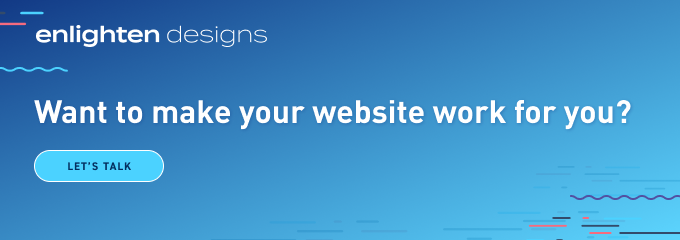#1: User-Centred Design
The concept of User-centred design bridges visual appeal and functionality. It's a philosophy and a set of design methods, putting the user front and centre in the design process.
There's four main steps involved in user-centred design:
- Research
- Design
- Adapt
- Measure
At every point during the process, the designer consults the user to determine what would improve the website UX. User-centred design is iterative, meaning it repeats until participants reach the desired end-result - in this case, a website that looks appealing and works well for users.
#2: Speed
Another element of great website design is speed. Your users are impatient – they want the site to load now.
Accelerated Mobile Pages (AMPs) solve that problem. AMPs are a faster version of a web page – they download faster than HTML. They offer other benefits too, such as:
- The ability for designers to add rich animation to them
- The reassurance that they always load well on mobile devices
- Giving a boost to website UX by giving users the information they need faster.
#3: Offline Functionality
There are times when users can’t connect to the Internet, yet still want to view a website. That’s where Progressive Web Applications (PWAs) come in.
PWAs allow websites to load on devices not connected to the Internet. WhatsApp represents a great example of a PWA – you can read messages when you’re offline and type responses. When you’re back online, WhatsApp sends the message. PWAs offer a better website UX because they provide some functionality users need even when they’re offline.
#4: Optimised Websites
‘Website optimisation’ means changing a website to improve usability, accessibility, and making it more discoverable - easier for search engines to find.
One example of website optimisation is to make your site voice-searchable. Voice searches are becoming a popular way to find content online: research from Adobe shows 48% of consumers perform voice searches for general queries.

#5: Good-looking Content
How many times have you navigated to a website only to discover that the content doesn’t display correctly? Sometimes, that’s a function of a site that didn’t load properly; other times, it’s an example of poor website design.
Choosing the right content management system (CMS) plays a crucial role in ensuring the content (text and images) looks attractive. If you only have one site to which you’re uploading content, a traditional CMS should serve you well. For multiple sites, you'll require a more sophisticated CMS.
#6: Incorporate Cutting-Edge Technology
In addition to implementing user-centred design into your website, consider the effect that cutting-edge technologies can have on website UX. One example that's a pretty hot topic right now is AI.
Here's two fairly common examples of how AI can improve your website UX:
- Chatbots – enable your website visitors to access self-service capabilities
- Machine learning – analyse visitor behaviour to learn what would be better UX -wise for your website
#7: The Right Kind of Eye-Catching Images
There are two kinds of eye-catching images you see on a website:
- Off-putting or even offensive
- Vvisually appealing, appropriate to the content and the overall website design.
Obviously you want to be using the second category of images to draw visitors to your site rather than risk offending or repelling them (and fielding a flood of complaints!). What characteristics does a ‘good’ website image have? Clear, crisp visuals with colours that don’t clash with the overall colour scheme and that fit in with the content. It makes sense that if you're designing a website for a moving company, you should use images of people moving.
Data visualisations can be an excellent way to catch attention as well as convey a sense of legitimacy. Everyone loves a relevant data-driven story and advances in technology now allow web designers to make data visualisations interactive, so they’re not only eye-catching but always up-to-date.
#8: The Website Looks Great on Any Device
In the third quarter of 2020, mobile devices (with the exception of tablets) generated over 50% of web traffic. That statistic has been consistent since the beginning of 2017. As the number of mobile devices grows ever higher, we’ll see the number of mobile web searches stay steady (if not rise).
Yet, people are still using desktops to access the Internet, too. It can be easier to search on a desktop rather than on your smartphone – the screen is larger, and there’s a keyboard attached to a computer. That’s why it’s crucial for web designers to create sites that work well on both desktops and mobile devices.
#9: Security
Security isn’t a web design element you can see, but it definitely impacts a site’s functionality. If your site doesn’t have security built into its design, you're leaving yourself vulnerable to hackers. Insecure sites threaten organisations and their clients, putting their information at risk and damaging their reputation; that’s why it’s crucial to build secure sites.
Enlighten Designs: Your Website Design Experts
For over two decades, Enlighten Designs has offered amazing digital experiences to our customers, including beautiful and functional website design, and content management systems that elevate user experience. Find out more today!

